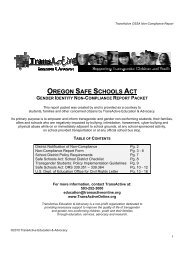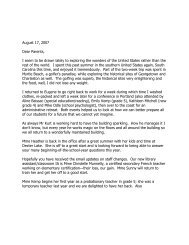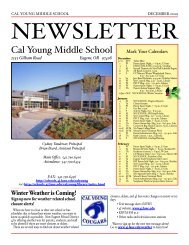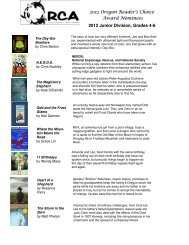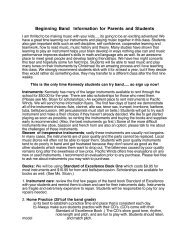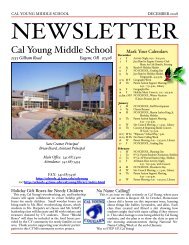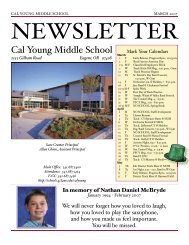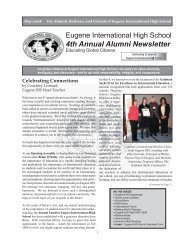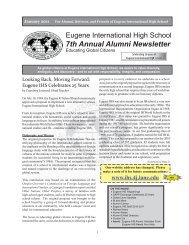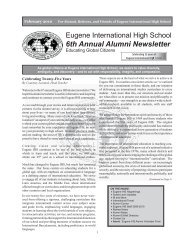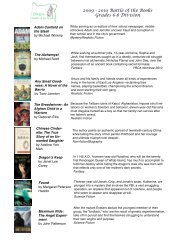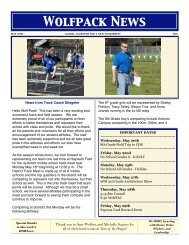Charlemagne Parent Handbook - 4J School District
Charlemagne Parent Handbook - 4J School District
Charlemagne Parent Handbook - 4J School District
You also want an ePaper? Increase the reach of your titles
YUMPU automatically turns print PDFs into web optimized ePapers that Google loves.
SCHOOL DISCIPLINE PROCEDURES AND EXPECTATIONS OF BEHAVIOR<br />
The district policies and procedures regarding discipline are outlined in the Students’ Rights<br />
and Responsibilities <strong>Handbook</strong>. The standards for student conduct are established to maintain a<br />
climate conducive to learning and for the protection of individuals and property. Any conduct<br />
that disrupts school activities is addressed. Inappropriate language, insubordination, threats,<br />
harassment, or violations of law are prohibited.<br />
The school discipline plan was developed to ensure that school is a safe place for children and<br />
adults so that all can participate fully in learning and teaching. The plan is composed of several<br />
components including Goals, Rules, Procedures and Consequences. Copies are sent in the backto-school<br />
mailing and they are available in the office.<br />
Goals:<br />
• Students will demonstrate self-control and responsibility in academic and social<br />
situations.<br />
• Students will demonstrate respect for other people’s person and property; ideas and<br />
feelings; learning and teaching.<br />
• Students will exhibit cooperative behavior and demonstrate an understanding of their<br />
rights and responsibilities within a group.<br />
We have three school rules that are applied in each area of the school. They are:<br />
Safety (Prudence)<br />
Respect (Respect)<br />
Responsibility (Responsabilite´)<br />
More specific descriptions of expected behaviors in different areas of the school are included on<br />
the behavior grid included in the back-to-school mailing.<br />
Throughout the school day students are encouraged to do the following:<br />
1. Monitor their own behaviors and choose behaviors that are appropriate for the situation.<br />
2. Work out problems themselves, when possible, by reminding others of the rules, asking<br />
others to stop specific behaviors, walking away, playing with someone else, etc.<br />
3. Seek help from an adult if they cannot resolve the problem themselves.<br />
4. Seek help from an adult if they are hurt themselves, if they see another person hurt, or if<br />
they are concerned about the physical or emotional safety of others.<br />
Consequences:<br />
If a child engages in prohibited behavior, several things may occur. They may be warned and<br />
asked to explain expected behavior, they may be asked to sit out and not participate in recess<br />
activities, they may receive a warning (dommage), or they may be referred to the classroom<br />
teacher or principal. <strong>Parent</strong>s will be notified of problem behavior when it is serious enough to<br />
warrant a referral or when parent help is needed.<br />
16




